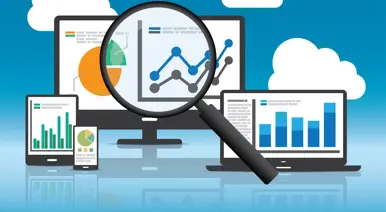Why and How to Measure Customer Satisfaction
Most companies say they believe in great customer service, but few set up a system to ensure that they provide it and achieve customer satisfaction. Delivering great customer service takes both understanding what your customers want and a way to see that they receive it.
How do you find out what your customers think is great service and why it is worth your while to gather that knowledge?
Delighted Customers Are Profitable
It’s widely accepted that it is at least five times more profitable to sell to an existing customer than to find a new customer. More important, the difference between satisfied customers and very satisfied customers can make a big difference in customer repeat business and your profits. For instance, Xerox found that customers who rated them a 6 instead of a 5 on a 6-point satisfaction survey scale were six times more likely to buy more products. This means, first, that measuring customer satisfaction is very important, and, second, that distinguishing between degrees of satisfaction by using customer surveys is crucial.
Measuring Customer Satisfaction
There are several ways to gather input from customers. The simplest way to find out how customers feel and what they want is to ask them. If you have only 20 customers, you can talk to each one personally. The advantage of this approach is that you’ll get a personal “feel” for each customer. The disadvantage is that you’ll gather different information from each customer depending on how the conversation goes.
Customer surveys with standardized survey questions ensure that you will collect the same information from everyone. Remember that few of your customers will be interested in “filling out a questionnaire”. It’s work for them without much reward. By launching a customer survey as an attempt to find out “how we can serve you better” — your customers will feel less put upon.
Here are a few of the possible dimensions you could measure:
- quality of service
- speed of service
- pricing
- complaints or problems
- trust in your employees
- the closeness of the relationship with contacts in your company
- types of other services needed
- your positioning in customers’ minds
Focus Groups
Focus groups are good ways to get informal input from a group of customers or prospects. You bring in 5-10 customers or prospects and ask them questions or have them react to material. You can pay a professional facilitator and videotape the whole session, or just lead an informal discussion yourself. In either case, you have a chance to gather ideas about customer needs, reactions to your company, suggestions for new services, and so forth. In addition to individual responses, you get ideas that develop as the group reacts to each other’s responses.
Client Advisory Groups
One way to get regular input from customers is to put together an advisory group. This can act like a focus group, but is set up to provide input over time. You may pay members, or simply buy them dinner every quarter.
There are many benefits to such groups. They give you a source of input from the customer viewpoint. They provide a sounding board for specific questions. They enhance your relationship with good customers who become more committed to your success. And they can move relationships with prospects ahead.
Advisory boards are a much-underused way to improve customer service, develop new services, and encourage repeat business. Even the smallest businesses can use them effectively.
If you would like to know more about how NBRI can help you, please contact us at 800-756-6168.




























 By submitting this form you agree to our
By submitting this form you agree to our